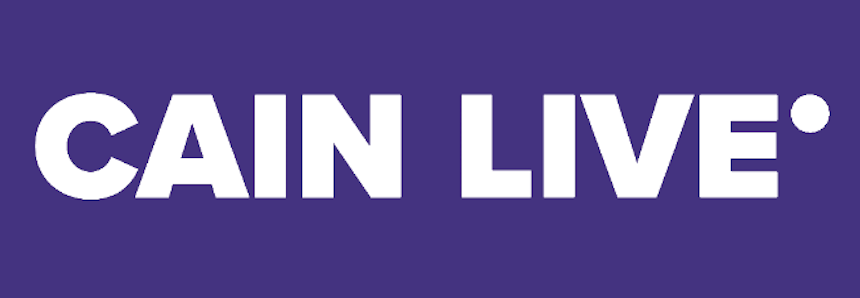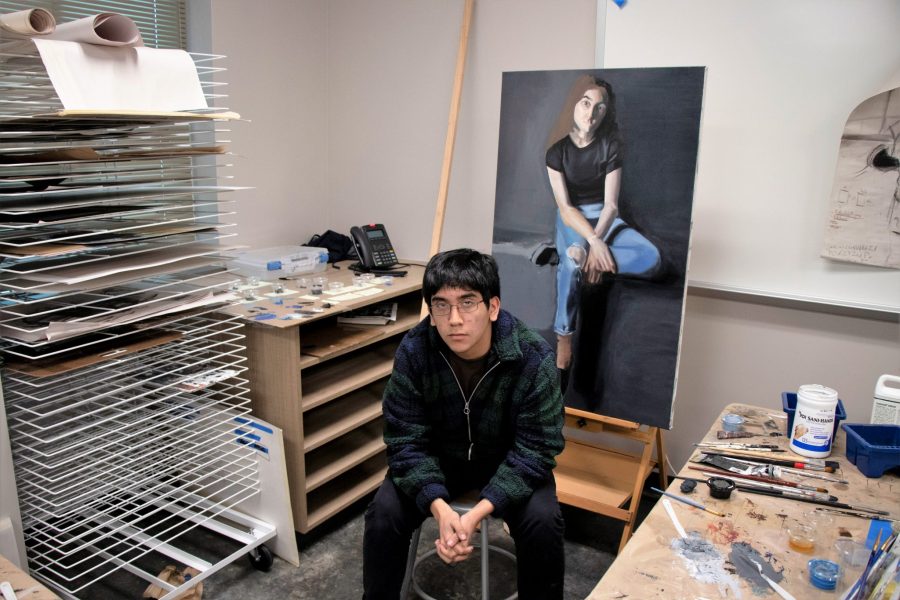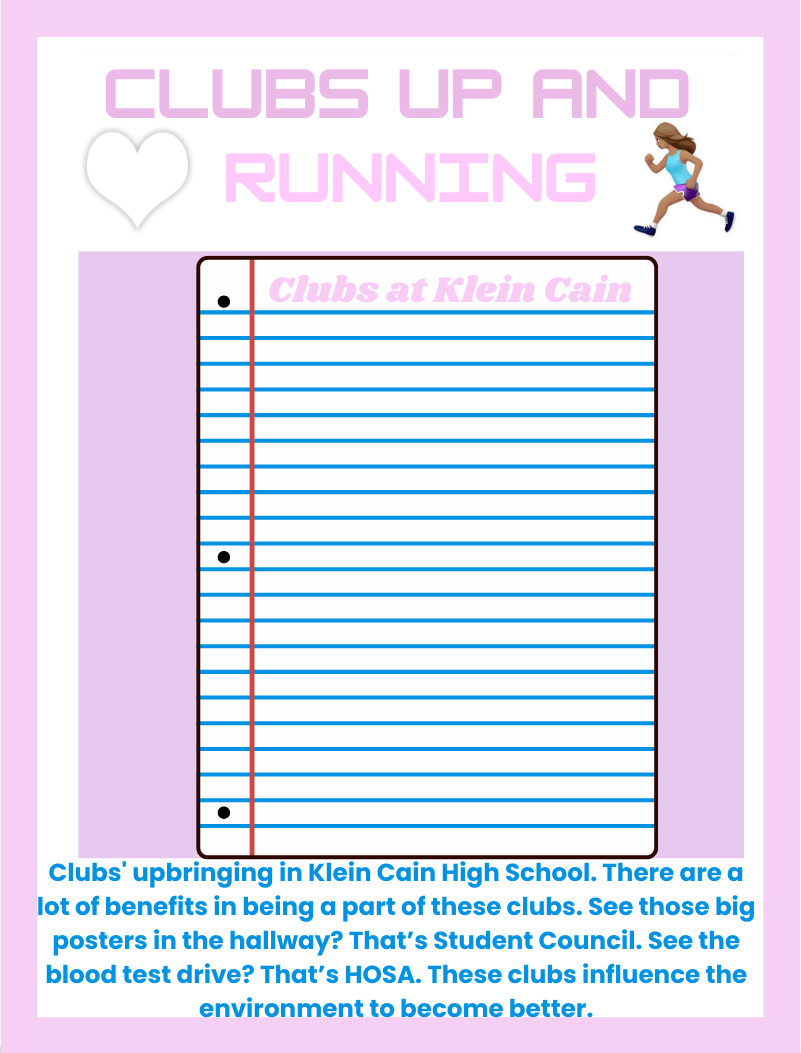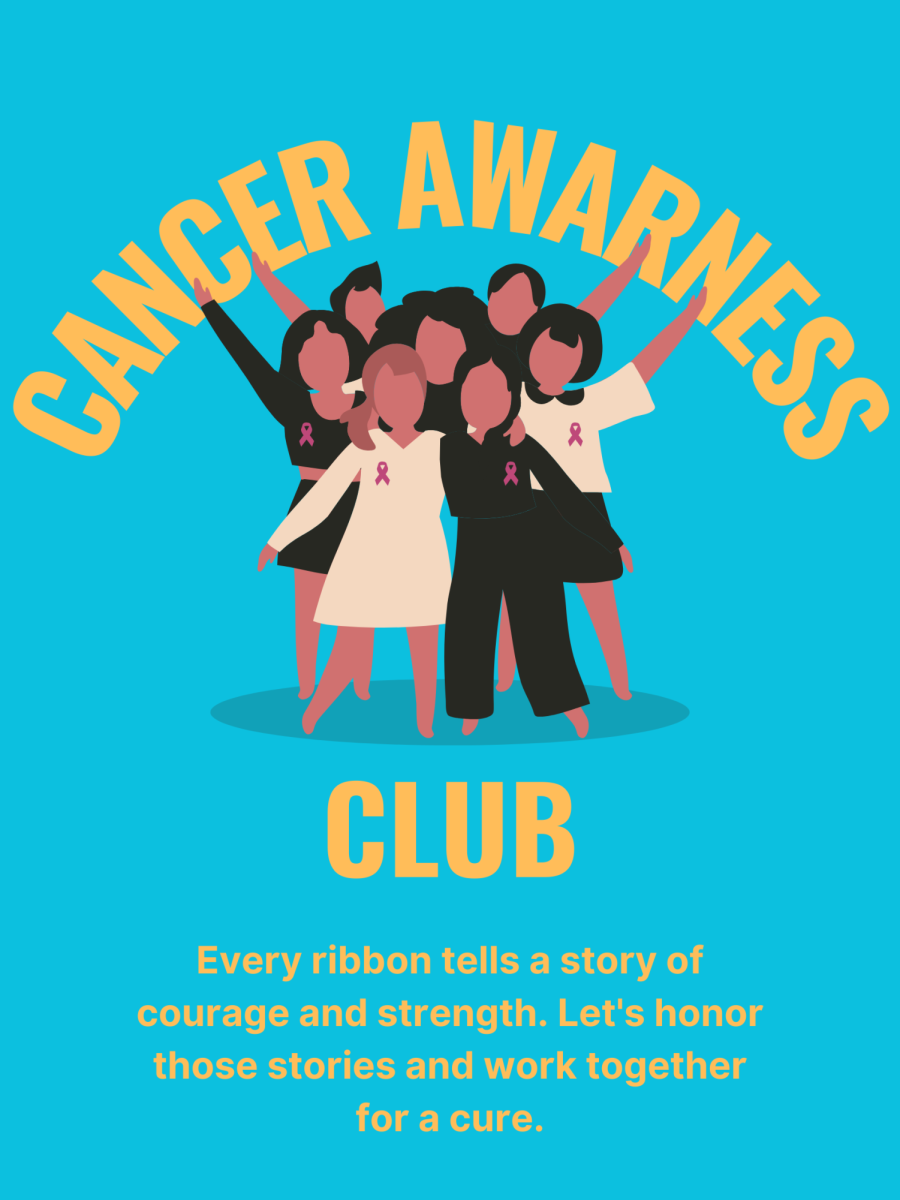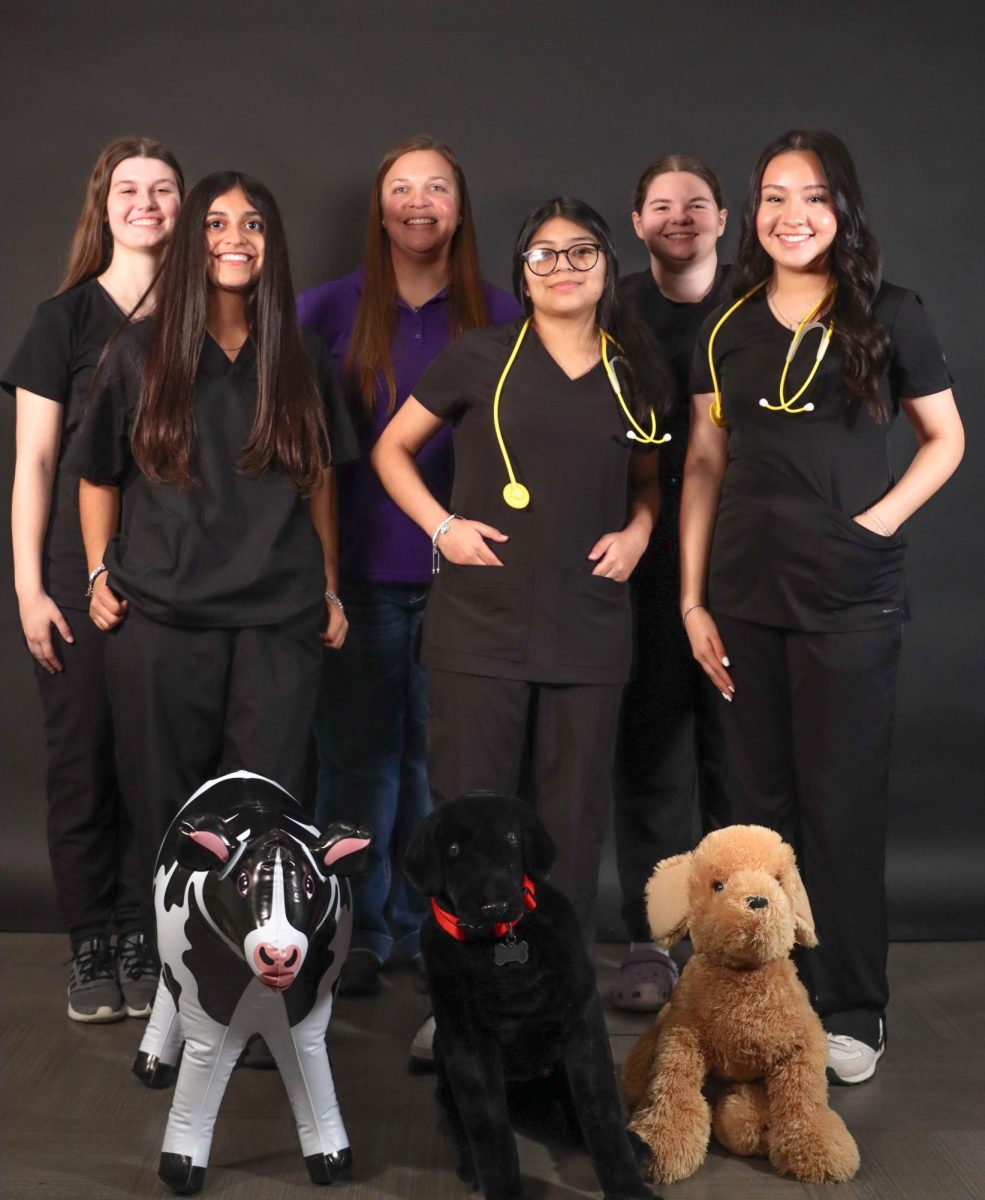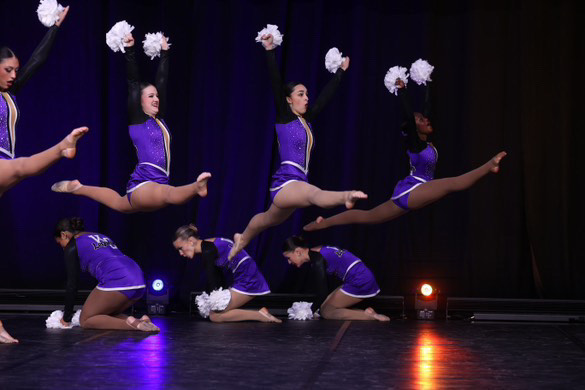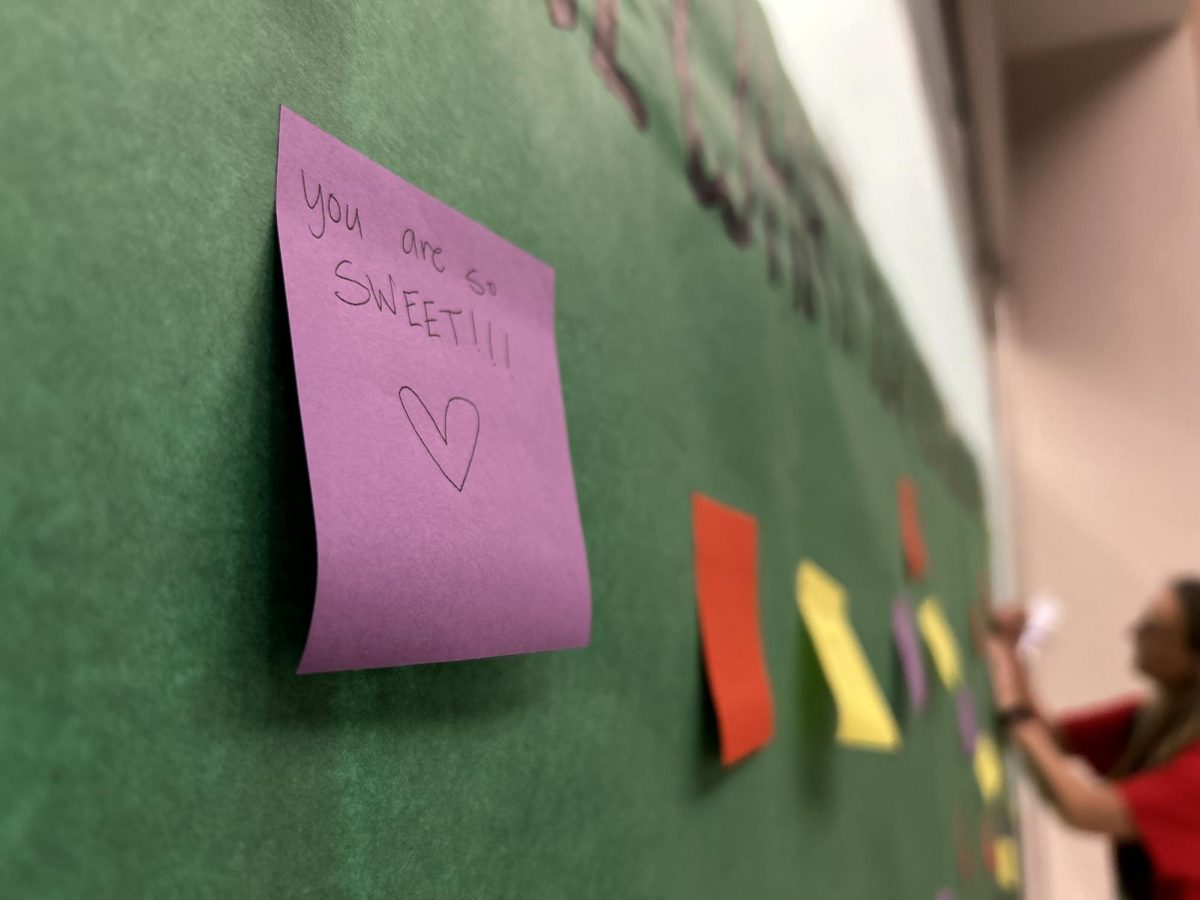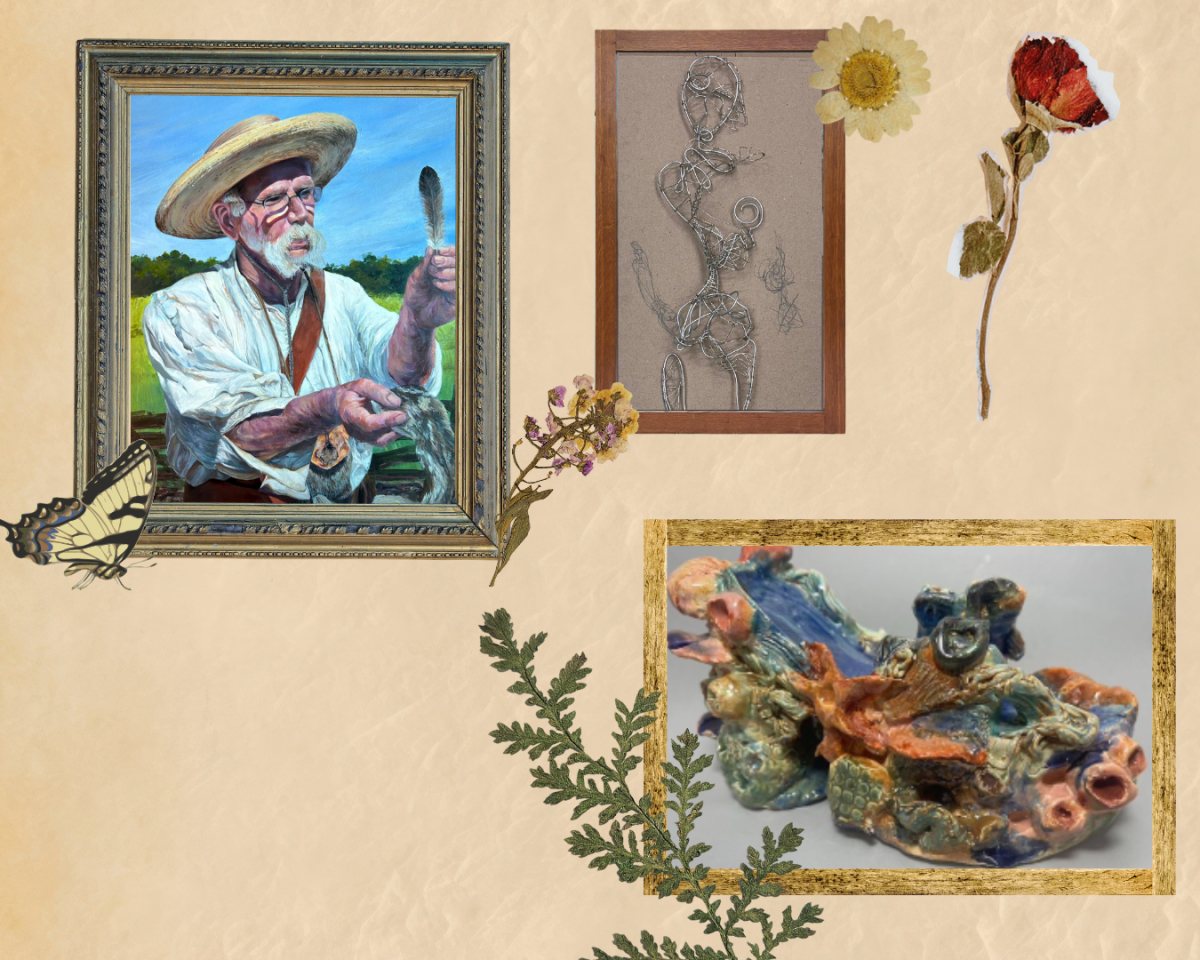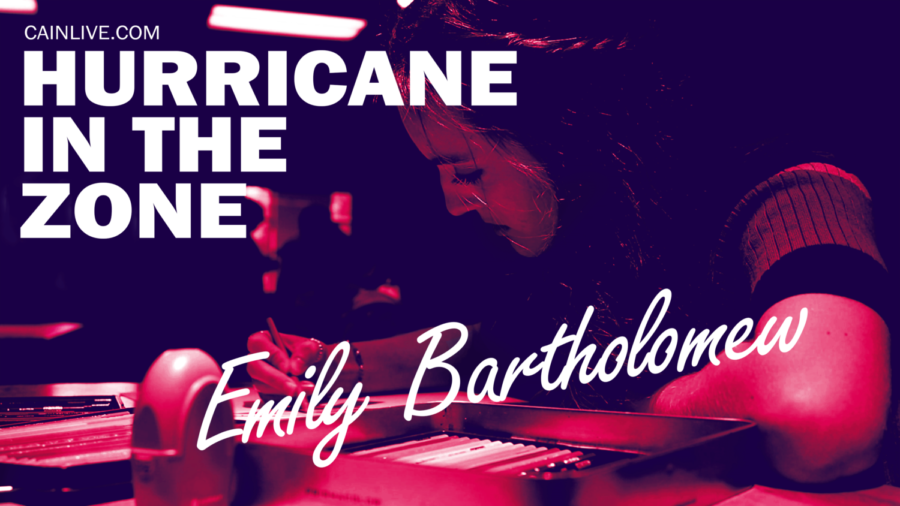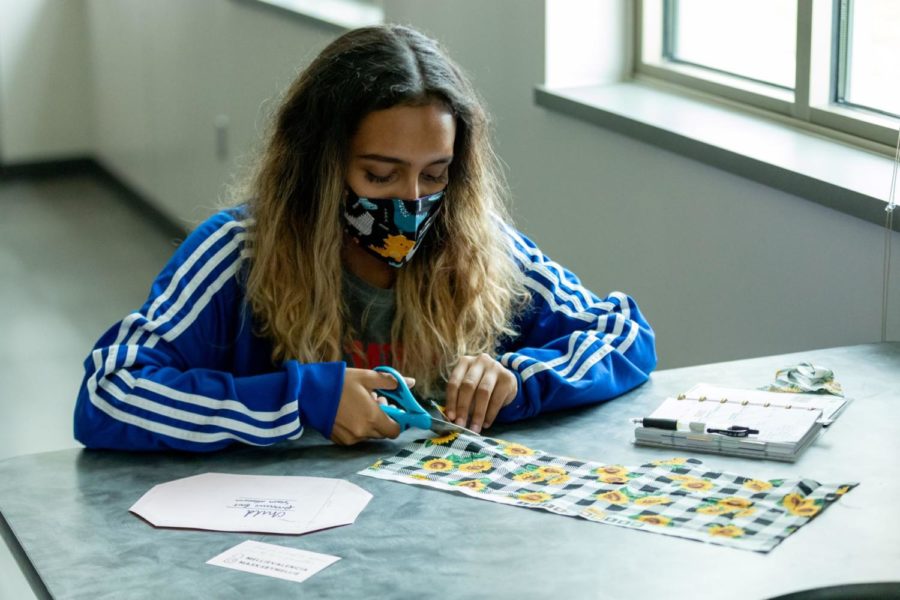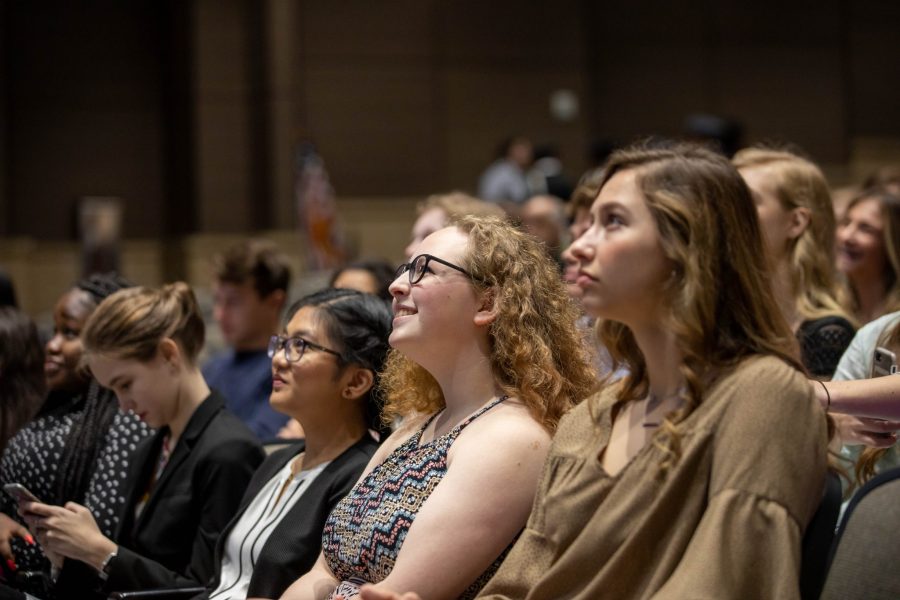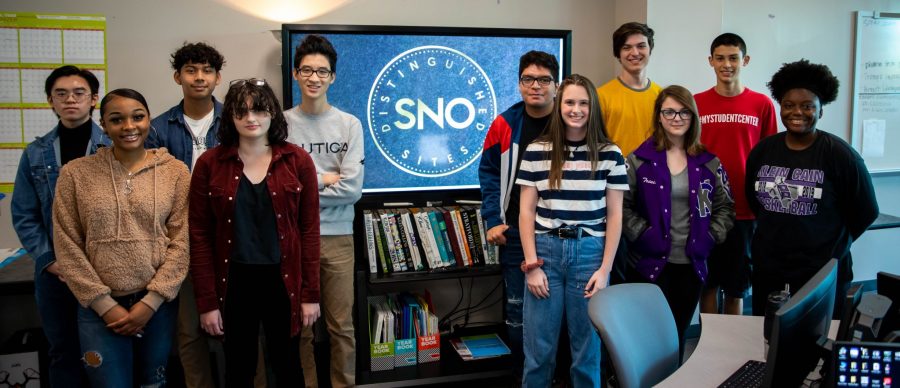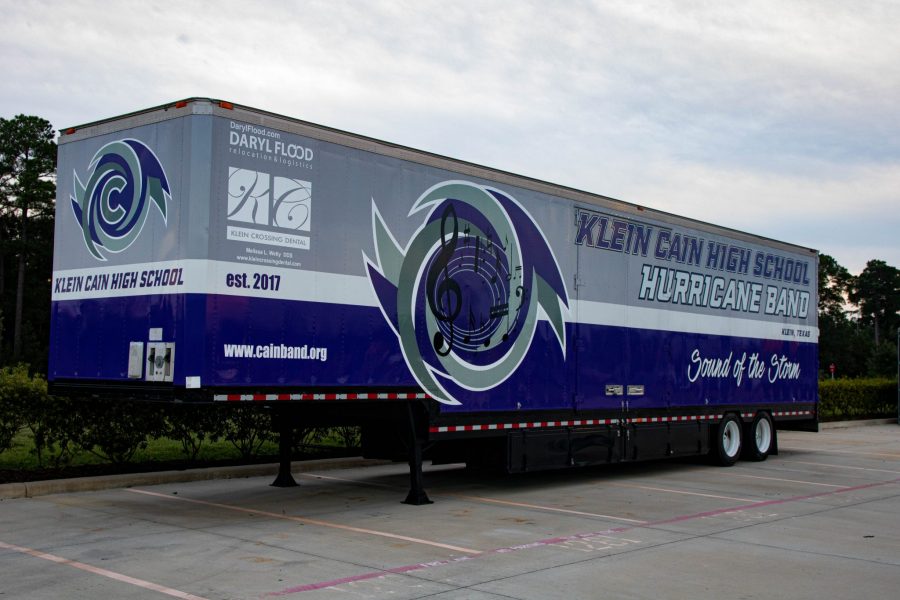March Spotlight of the Month
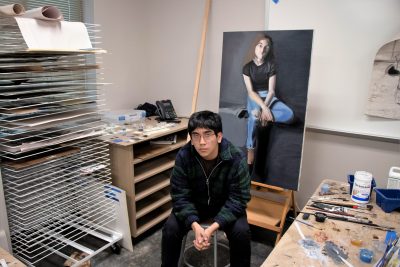
VIDEO INTERVIEW HERE
Last month, Klein Cain student Carlos Chavarria won a RISD scholarship for his art portfolio which he submitted to the Rhode Island School of Design. The scholarship grants Chavarria access to the prestigous school, tuition free, for the six week pre-college program in Rhode Island.
“I had a portfolio consisting of five pieces,” Chavarria said.
In Chavarria’s portfolio, his five pieces demonstrate his diverse use of brushes as well as his ability to use a variety of colors; these colors including browns, blacks, and primaries. In addition to demonstrating his artistic skills, his portfolio also showcases his “underlying interests”.
“The main thing I wanted to display was [not only] that I had a variety of work but that I was competent. Each medium of choice, each medium I had worked in, [I wanted to show that I was competent],” Chavarria said. “You could say what I accomplished through each artwork was mainly not only a display of competence but a display of understanding of what I was doing with any artwork and using a foundation of my underlying interests, like you know– people, movies, other art or music– using those interests to develop ideas with other mediums like charcoal or watercolor or oil paint or whatever it may be.”
With the scholarship, Chavarria expects to receive a grant from the school to help him create more original artworks in order to further advance his artistic abilities.
The RISD Scholarship
“I found out about RISD last summer. Beginning of the summer of 2018 from a teacher. I always had a goal in the back of my mind going into 10th grade,” Chavarria said. “My main goal was to get ten really good artworks out of myself before the year ended. And I’m still working on that most certainly. But what came about was these five pieces that I was able to choose from for RISD. So I was able to find out about RISD and I was able to find out about other programs. RISD was sort of the first one I applied to that got back to me real quick.”
“The scholarship is quite a bit of money,” Chavarria said. “The most kind of proud about the scholarship is that I was able to sort of– I was able to want it. I was able to think about how I was going to get it and then I was able to execute. And [to me] that’s sort of just… Having that come to fruition is really a satisfactory feeling and it really just shows what you can do if you put your heart to it.”
How the School Helped
“I took all my pictures, but you know, I use the school cameras so that could be seen as help,” Chavarria said. “And the lighting I use is also [owned by] the school. And so, mainly, what the school does for me is just provide tools to me rather than advice or whatever else I consider artistic help. Everything you see from the way the models are positioned to the composition to what the what photos I use all of that is sort of dictated by me. And I make sure that one thing I’m very appreciative of is the fact that I have all the tools [I need]. It’s sort of a reason why I got the scholarship and might be able to do what I’m doing.”
“And well, like I said, I had many pieces to choose from going into RISD, so I made sure that I contacted all of my teachers, all my past middle school teachers, all my current high school teachers, and even some teachers outside of public school,” Chavarria said. “So I was able to sort of as I had about you know I think eight or nine pieces in which I was very confident and I was able to basically cut that number in half [to five]. And so they helped me sort of curate my work and helped me display the most effective amount of competence in the shortest number of pieces.”
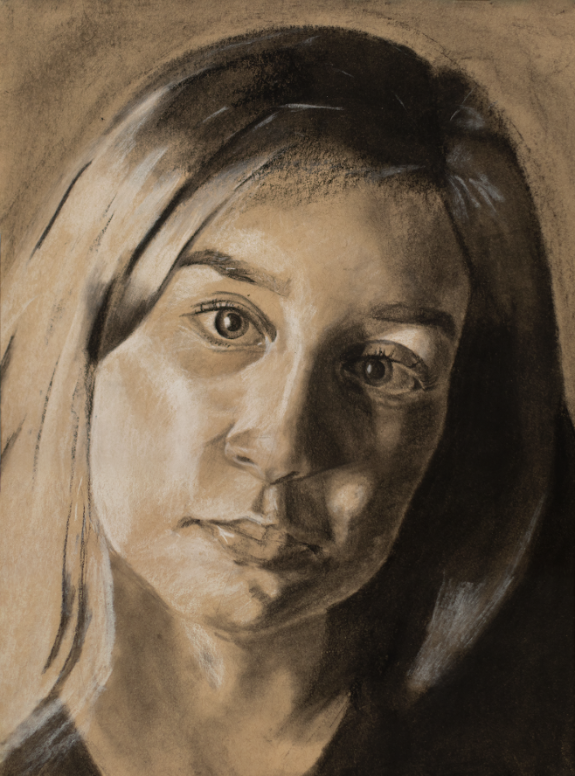
Portrait of Friend
For the RISD scholarship, Chavarria created ten different artworks showcasing his skills with various types of colors, brushes, and tools. Out of those ten, Chavarria submitted five. The first one being, Portrait of Friend, in which he exhibits his ability to use charcoal on top of the ground paper.
“Portrait of Friend was originally a study for a painting I’m working on but it turned into what it is,” Chavarria said. “It’s really just a portrait of a friend. It shows that I can work in charcoal and on top of toned tan paper. The title is pretty much what you see and what it displays is an understanding of light.”
Distraction
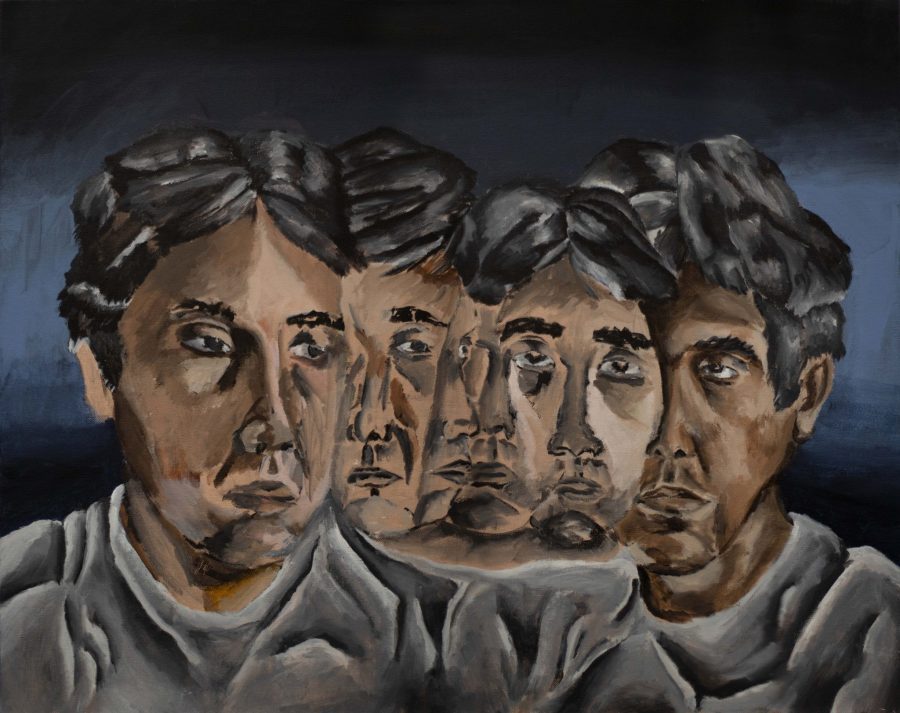
“Distraction was supposed to be something reminiscent of like Lucian Freud or Francis Bacon with some Freud colors,” Chavarria said. “If you’ll look at some of his paintings, you’ll see that a lot of his paintings are really ugly colors, really local browns with minimal primaries. And if you know who Lucian Freud is, you see that. And [from] Francis Bacon, I took the idea of sort of distorting the figure, combining figures. That’s why my face is sort of combined, they also create new ones, as you can see in the artwork. And yes, this is a self-portrait.”
Smoke in the Wild
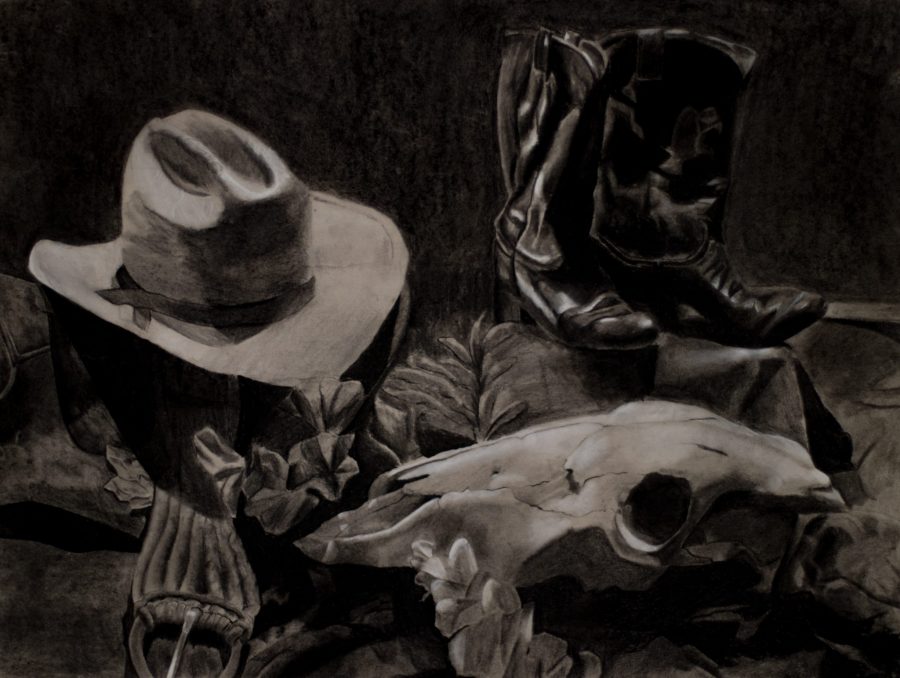
“Smoke in the Wild was supposed to be sort of a hint or nod to some of my favorite Western movies from like Tarantino or Clint Eastwood,” Chavarria said. “I sort of admire those movies like Hateful Eight and The Good, the Bad and the Ugly. Some of those movies. I think that what I really wanted to do is to create a tone– an atmosphere within the artwork and one thing I wanted to explore is the physical space between the viewer, the artwork itself, and the space in the artwork. And so that’s why you saw this… Things sort of piling up on one another and that’s why you see the flowers in the saddle, the hat sitting in the saddle, and the flowers behind the stool. And so I wanted to explore that atmosphere within this artwork. It’s also another display of just pure technical skill and charcoal.”
Self-Portrait
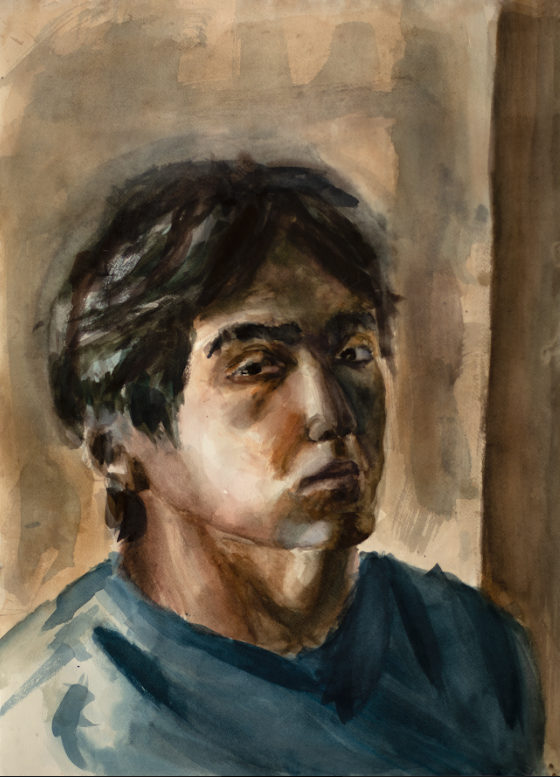
“Self-Portrait is just another exploration of influences on me,” Chavarria said. “Some of the same influences from my other self-portrait like Distraction you see. Like I said earlier, Lucian Freud Francis Bacon, both these artists sort of inspired what I wanted to do with this artwork and what I really wanted to do was sort of have a– I wasn’t too focused on making it look like me or having it be too realistic. What I really wanted to do was explore how color can affect someone because this is one of the only color pieces in the whole portfolio.”
–
“One thing that I want to explore is how you can sort of lay basic primaries in red, blue, and yellow,” Chavarria said. “You can lay those as the foundation and then go on top with neutral colors like brown or black and see how that affects the skin, or how it can affect and add depth to skin.”
“Other things that I’ve sort of wanted to explore was the brushwork and so you see that some of the brushwork is really just sort of figurative. You can literally see where I took the brush and just sort of drag my hand across the paper or try to brush my like on the shirt or in the background [most certainly]. This artwork is probably my largest one and so I really took the opportunity took to display that I was able to work with large brushes and so, in the background, I used a two-inch brush which is quite large. And I just took it and sort of dragged it across the paper reminiscent of Willem de Kooning or something like that probably. So I explored the physicality of being an artist along with all the color depth, influences, that happen here.”
Girl in Dark Room
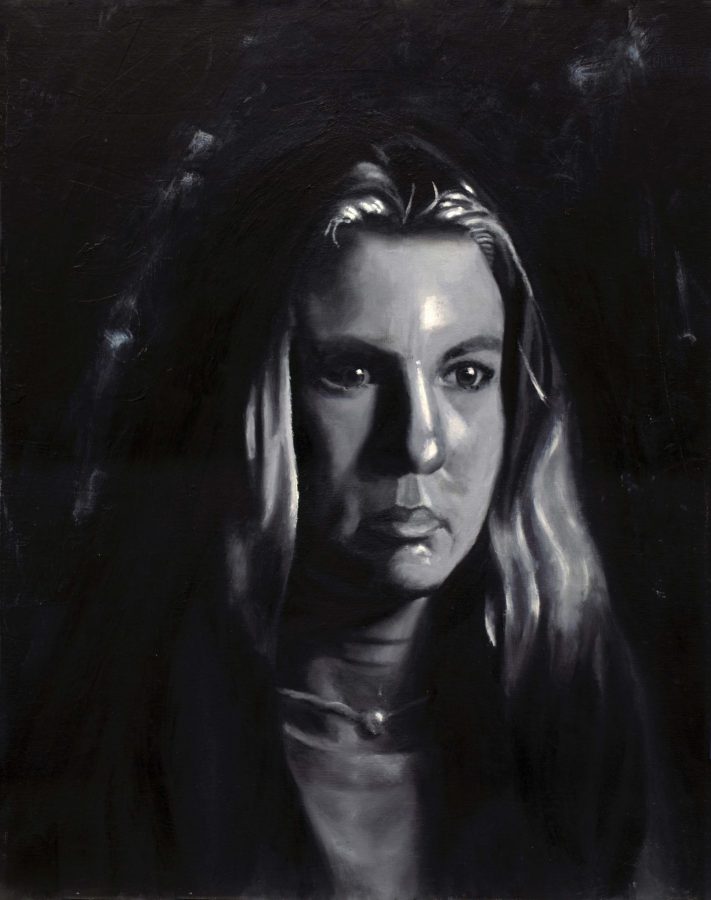
“If you know a little bit about art history you can see influences of Rembrandt or Velasquez, or you know, someone might say it’s reminiscent of the composition of the Mona Lisa was,” Chavarria said. “But yeah, it shows my interest in light and how that may affect someone on their skin or their eyes or this or that. And so I think that it accomplishes what it’s trying to do which is a person in an interesting environment with interesting lighting. Something like that.”
What He Plans on Improving On
“If you look at a lot of skills like playing the piano or drawing, there is a very high skill gap between a beginner and intermediates and [between] an intermediate and advanced,” Chavarria said. “People like Michelangelo Raphael Velasquez and Rembrandt…to reach that cap of mastery you need to put in decades of work. And so, is there room for improvement? Of course. But how long that is going to take? It won’t take a couple of weeks. It won’t take a couple of months. It’s going to take years. It’s going to take decades.”
“Particularly, I’m working on improving my painting process and improving my drawing process [in the most efficient way],” Chavarria said.
Is Art a Potential Career Path?
“It’s something I’ve thought about,” Chavarria said. “I’m pretty sure anybody who has a passion in anything would think about that [as] their passion to a successful [career]. And do I see it happening? I can’t really tell you. I didn’t see me getting a RISD scholarship a year ago. And I can’t really tell you what I’m going to do next year or the year after. But I think that: what opportunities does it open? That’s more what I’m concerned about and sort of, you know, using all my past achievements. For instance, one of the things that was very helpful in getting the RISD scholarship was that I was awarded a[n] APP scholarship to the Glassell School of Fine Arts during my eighth-grade year and then I was awarded a three-year scholarship and so I took my first year was my ninth-grade year.”
The Glassell Scholarship Program
Before the RISD scholarship, Chavarria also won the Glassell scholarship the year prior. The Glassell scholarship gives Chavarria the chance to attend a program in the Glassell School of Arts in Houston, Texas. In the program, Chavarria [and his other peers] refine their skills in art with professors at the school.
“I’m currently in my second year,” Chavarria said. “[Next year] I’m going to do my going to finish my third year as a junior.”
In addition to attending the Glassell School of Arts, he also included the school in his essay when applying for the RISD scholarship.
“I wrote that in all my essays for RISD and my teachers mentioned it to them and their letters,” Chavarria said. “That, to me– if you can do something you can do another thing and if I could do Glassell then I can do RISD, and if I can do RISD, I can do probably something even better and greater. And I think that that in itself is probably– you know, taking those opportunities that are sort of out there… that in itself is sort of an accomplishment.”>

